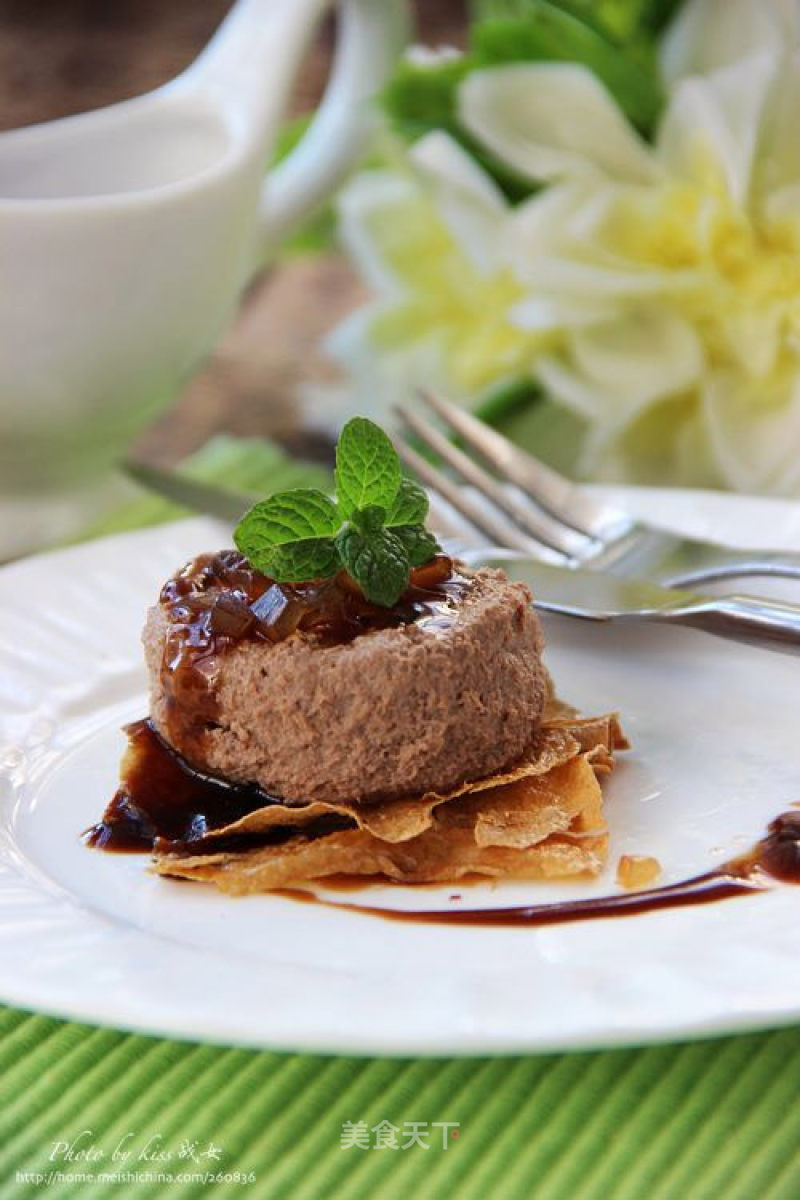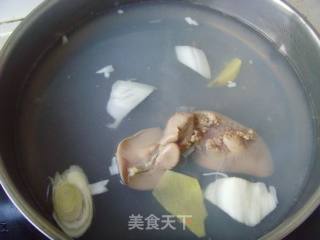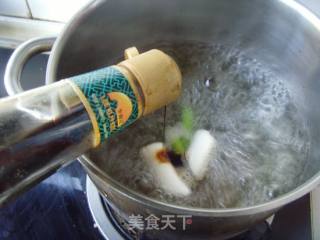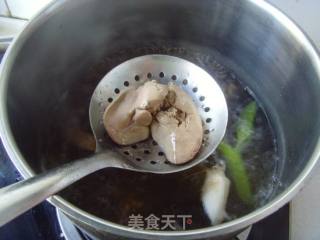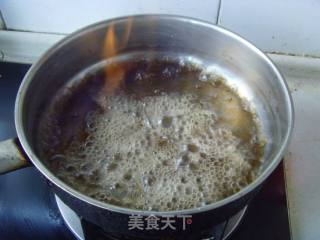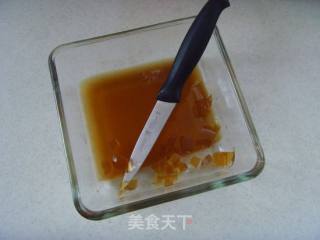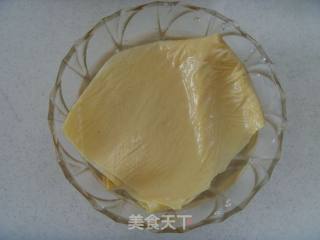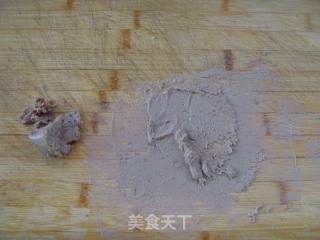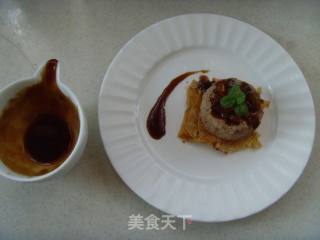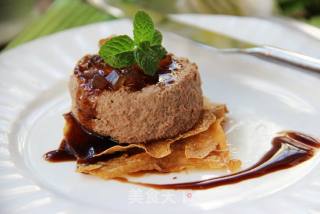Drunken Foie Gras with Oyster Sauce Vinaigrette
1.
Wash the fresh foie gras and soak in green onion and ginger water for 2 hours, changing the water 2-3 times between.
2.
Remove the fascia, add the green onion, ginger, and cooking wine, cook until it changes color, remove it, and rinse to remove any foam
3.
In another pot, add enough water, add green onion, ginger, pepper, star anise, bay leaves, steamed fish and soy sauce, and bring to a boil.
4.
Turn off the heat, soak the foie gras until the brine cools.
5.
Mix Huadiao wine, sorghum wine, and isinglass powder and stir well.
6.
Bring to a boil on low heat.
7.
Pour it into a container, let it cool and put it in the refrigerator until it solidifies, then take it out and divide it into small pieces for later use.
8.
Soak the oily bean curd in warm water and cut into cubes.
9.
Fry in a 50% hot oil pan until crispy and remove. Use kitchen paper to absorb excess oil and place on a plate.
10.
Fry in a 50% hot oil pan until crispy and remove. Use kitchen paper to absorb excess oil and place on a plate.
11.
The foie gras is rolled to remove the tendons attached to the liver, and then pressed into a mold to form a compact shape; it is placed on the yuba layer and decorated with flower carving jelly.
12.
Mix the old village oyster sauce, vinegar, and sugar to form a balsamic dipping sauce, and pour it into the plate.
Tips:
1. Foie gras doesn't like things with bitter taste, and doesn't like things with too strong taste. Avoid lettuce with too much mustard and vinegar.
2. The preparation of foie gras is not difficult, but it is time-consuming and labor-intensive. Foie gras can't be overcooked, it will become old and lose its delicate taste.
3. Duck liver is thinner and longer, while foie gras is rounder; duck liver has a stronger taste than foie gras, and more spices must be added during processing; in terms of taste when eating, foie gras is softer than duck liver; when cooking, Due to the high water content of duck liver, the shrinkage ratio is greater than that of foie gras.
4. Fresh foie gras should have a firm texture and a shiny surface when touched. Foie gras should be uniform in color, and bloodshot or bruises are not top-grade.

